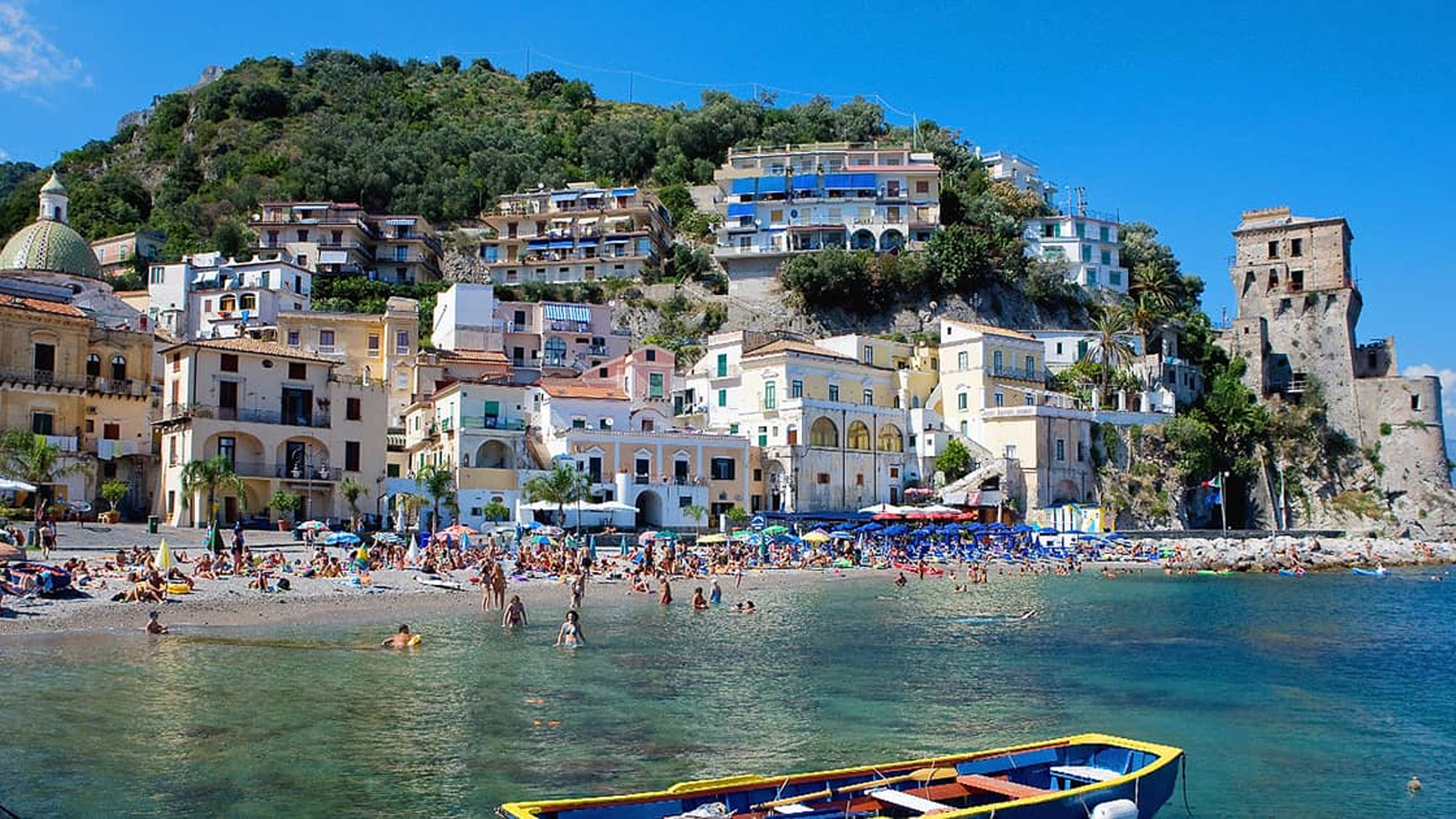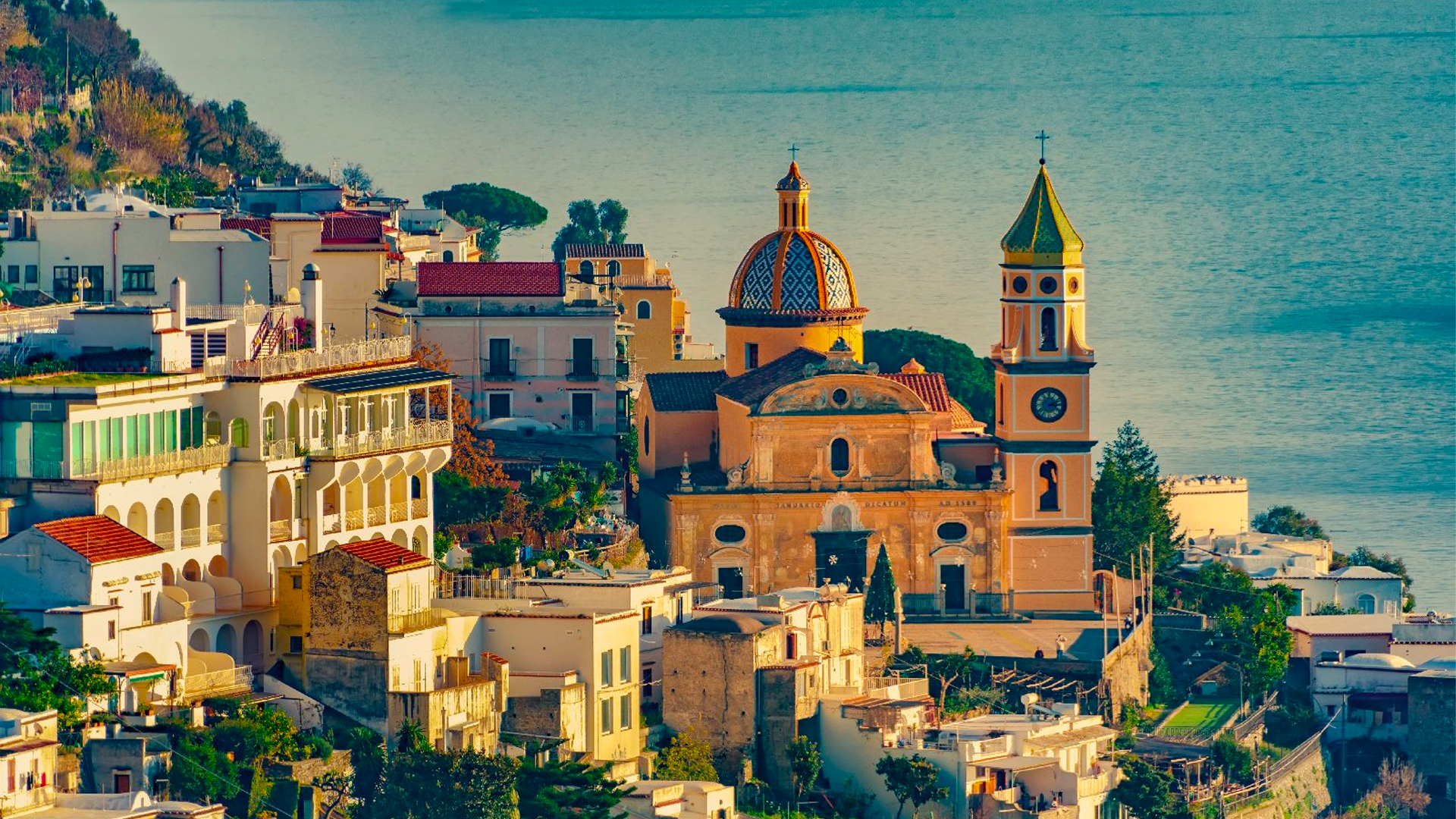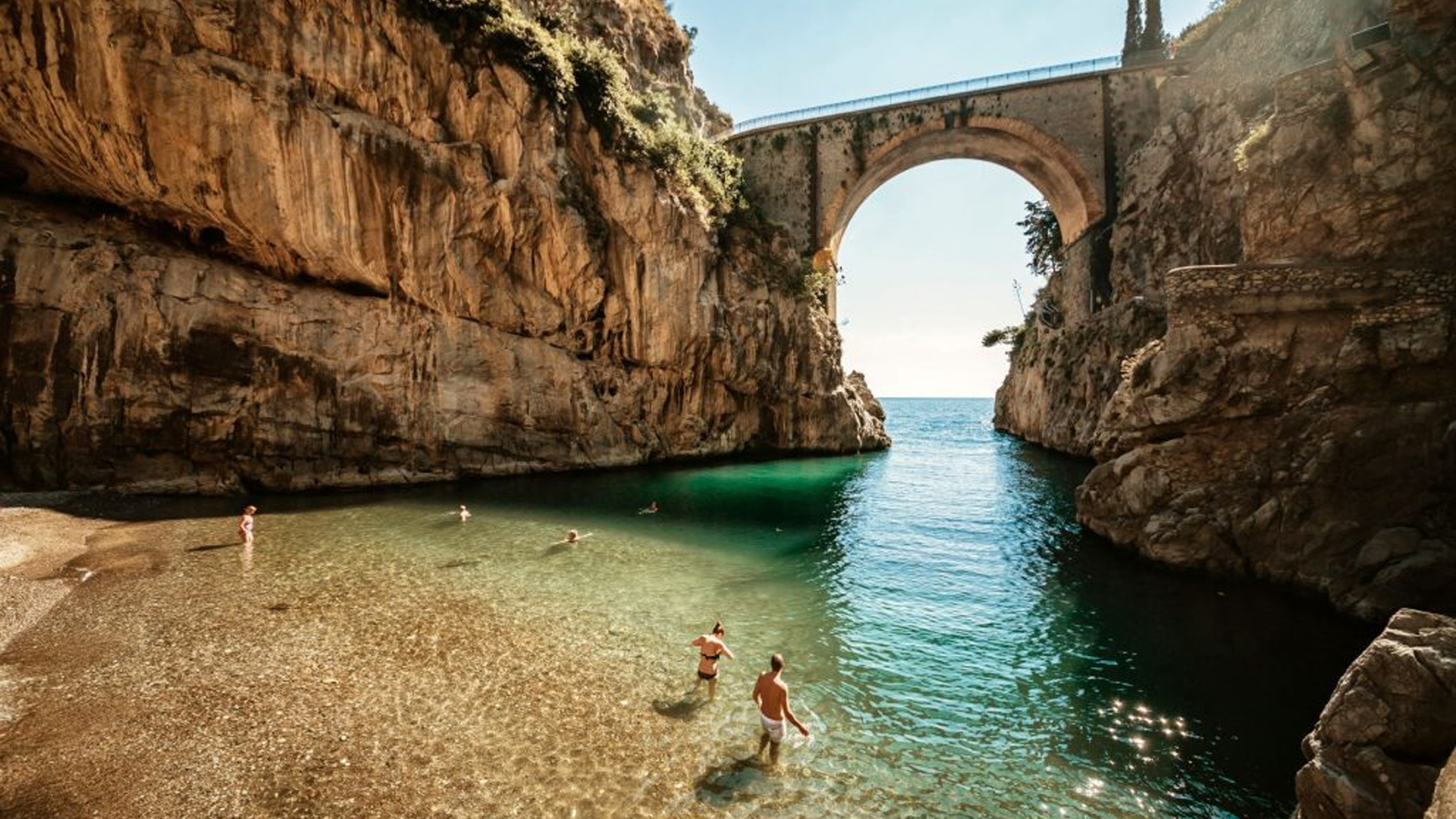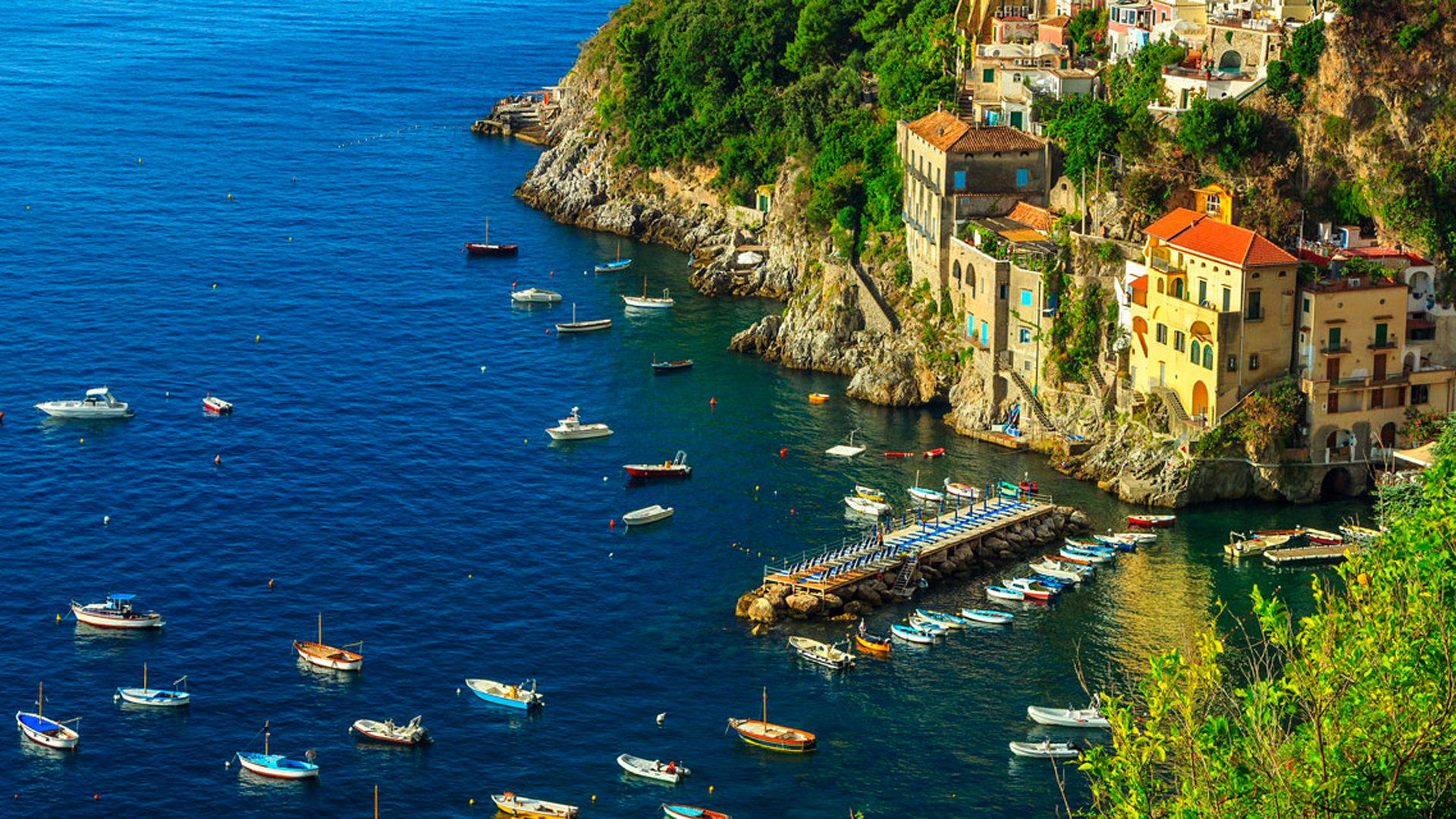Technically speaking, the Amalfi Coast is a stretch of coastline along southern Italy overlooking the Tyrrhenian Sea and the Gulf of Salerno. But to many, the area is one of the most beautiful in Italy, and its landscape is the true embodiment of la dolce vita. Known for its small villages nestled into imposing mountains, winding streets, pebbled beaches, turquoise waters, and pastel-colored houses that seem to have been carved out of the craggy hillsides, the Amalfi Coast is a marvel to behold. It’s no wonder it’s a UNESCO World Heritage Site.
The stunning coastline is peppered with 13 towns, and every week America Domani will release a brief list highlighting their history and unique characteristics. This week’s list features:
Cetara

Located in the province of Salerno, Cetara is a cozy fisherman’s village nestled between the sea and mountain slopes. A handful of pastel-colored houses are clustered around a narrow stretch of sand that overlooks small wooden fishing boats bobbing in the water. The fishing cove is renowned for its fresh catches, including tuna that is caught with traditional nets.
Conca dei Marini

This small fishing village located on a hill was most likely founded by the Etruscans before being conquered by the Romans sometime around the 3rd century BC. The town’s most noteworthy attraction is the Grotta dello Smeraldo, meaning Emerald Cave. Discovered in the 1930s by a local fisherman, the cave offers boat tours for tourists and features an underwater nativity scene constructed by a local artisan in the 1950s.
Furore

Referred to as “the town that isn’t,” Furore doesn't have a main square but is rather scattered around the rocky cliffs. Meaning “fury” in English, the town may get its name from the roar of the waves crashing against the cliffs on stormy nights. Furore’s main attraction is its fjord, is the backdrop for one of the Amalfi Coast’s most popular beaches, located in a narrow cove. Framed on either side by craggy cliffs, the cove is crossed above by an arched bridge.
Asia London Palomba
Asia London Palomba is a trilingual freelance journalist from Rome, Italy. In the past, her work on culture, travel, and history has been published in The Boston Globe, Atlas Obscura, The Christian Science Monitor, and Grub Street, New York Magazine's food section. In her free time, Asia enjoys traveling home to Italy to spend time with family and friends, drinking Hugo Spritzes, and making her nonna's homemade cavatelli.


